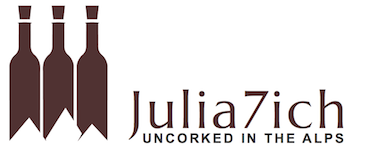Many of my WSET diploma students stumble upon questions concerning the term “süssreserve” or in German “Süßreserve”. This is likely because its use has declined greatly with the popularity of dry wine styles and modern methods of arresting fermentation before all the grape must sugars have been converted to alcohol. I suspect that it is also due to the fact that wine producers that use additives and processing agents don’t like to advertise it and labelling of additives (with the exclusion of sulphites) is largely not required.
Many students confuse süssreserve with rectified concentrated grape must and chaptalization. But this is wrong: süssreserve (which literally translates to sweet reserve) is the German term used to refer to unfermented grape juice that is used to sweeten a wine AFTER fermentation to soften acidity.
The alcohol content of süssreserve cannot exceed 8 g/l, which is approximately 1 % alcohol by volume. Its use in Germany is allowed for all quality wines including the wines predicated Kabinett, Spätlese, Auslese, Beerenauslese, Trockenbeerenauslese and Eiswein. For predicated wines or wines stating a specific origin, the süssreserve must stem from the same origin as the wine to which it is being added. In Austria, its use is prohibited for predicated wines.
Adding süssreserve not only raises the sugar level of a wine, it balances high acidity, makes the wine rounder and softer, and lowers the amount of alcohol. Under German law, no more than 15% of the wine’s final volume may be süssreserve. In Austria no more than 15 g/l sugar may be added through the use of süssreserve.
In the past, süssreserve was preserved by adding high doses of sulphur dioxide. Today it typically undergoes near sterile filtration and cold stabilization to precipitate tartrates. It is stored refrigerated for up to 12 months.
Today the addition of süssreserve to sweeten a finished wine is often replaced by the addition of grape must concentrate or rectified grape must. The use of grape must concentrate and rectified grape must is less expensive because their high sugar content prohibits the development of undesirable microorganisms and can be stored without sulphur dioxide or refrigeration.The addition of grape must concentrate or rectified grape must is not allowed for predicated wines in ‘Germany or Austria.
The practice of sweetening wines post fermentation has decreased significantly. Most producers that wish to intervene in residual sugar content of a wine prefer to arrest fermentation before all the sugars have been converted to alcohol. Adding süssreserve also changes the composition of sugars. During fermentation glucose is fermented more quickly than fructose. A halted fermentation will thus render a wine with residual sugar comprised mainly of fructose, while the use of süssreserve will yield a wine with a residual sweetness comprised of both glucose and fructose.






